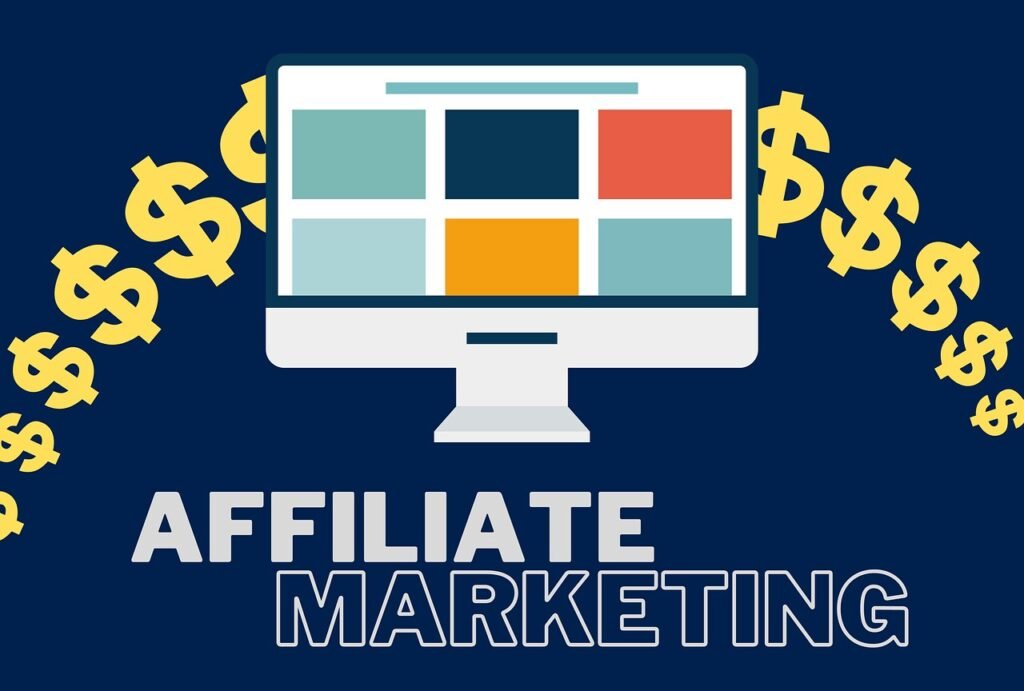Understanding Customer Relationship Management
Importance of CRM Strategies
Customer Relationship Management (CRM) is a critical component for any business aiming to boost customer satisfaction, increase sales, and build long-term relationships. You need to understand the power of CRM strategies to fully leverage these benefits.
CRM encompasses strategies, processes, and software designed to manage interactions with customers and potential clients (Appvizer). Effective CRM strategies focus on collecting and organizing customer data to streamline the purchasing process and send targeted marketing material based on customer demographics and interests (Better Agency).
Primary CRM Goals
The main objectives of implementing a CRM system include:
- Improving Business Efficiency: By automating day-to-day redundancies, you can focus on strategic planning and decision-making.
- Enhancing Customer Satisfaction: A positive customer experience is crucial for both retention and attracting new customers. CRM strategies help in personalizing interactions, making customers feel valued.
- Increasing Sales: By streamlining the sales process and making it more efficient, CRM can lead to higher conversion rates.
- Expanding the Customer Base: CRM tools and data analysis can help you discover new customer segments and effectively target them.
- Building Long-Term Relationships: By nurturing relationships with existing customers, you can increase loyalty and reduce churn.
| CRM Goals | Benefits |
|---|---|
| Improve Business Efficiency | Focus on strategic tasks |
| Enhance Customer Satisfaction | Personalized interactions |
| Increase Sales | Higher conversion rates |
| Expand Customer Base | Target new segments |
| Build Long-Term Relationships | Increase loyalty |
Why CRM Strategies Matter
Utilizing effective CRM strategies allows businesses to align their marketing, sales, and operational efforts, contributing to significant growth and sustainability. For instance, 6 in 10 marketers use customer data to make informed business decisions. This highlights the necessity of leveraging customer information for strategic purposes.
CRM tools are instrumental in the lead conversion process. They help you identify which leads are ready to convert, thereby optimizing your sales efforts. For example, CRM processes involve generating brand awareness, acquiring new leads, converting these leads, providing excellent customer service, and retaining customers while upselling or acquiring customer feedback (Better Agency).
By following superior CRM strategies, you can expand your market reach and build a robust customer base. Explore various tactics for customer retention and improving customer loyalty for sustainable growth.
To learn more about strategies to enhance your customer base, check out our detailed guides on effective customer base building and customer base expansion tips. Enhance your CRM strategy today and watch your business thrive.
Goals and Objectives of CRM
Enhancing Customer Experience
The primary goal of Customer Relationship Management (CRM) strategies is to create a superior customer experience. A well-implemented CRM strategy helps businesses understand and respond to customer needs, ensuring high levels of satisfaction and loyalty. By organizing and analyzing customer data, you can personalize communication and provide tailored offers, much like Amazon’s approach to customer obsession. This customization fosters a positive interaction that can lead to improving customer loyalty and long-term relationships.
Technology plays a significant role in enhancing customer experience by streamlining interactions and reducing redundancies. Automated workflows, for instance, enable timely follow-ups and targeted marketing based on individual customer demographics and interests.
Some key outcomes include:
- Improved customer satisfaction
- Enhanced engagement through personalized experiences
- Increased brand loyalty
For better understanding, consider these data points on customer satisfaction increases through CRM strategies:
| CRM Strategy | Percentage Increase in Satisfaction |
|---|---|
| Personalized Email Campaigns | 25% |
| Tailored Offers and Discounts | 40% |
| Efficient Complaint Resolution | 35% |
Increasing Sales Efficiency
Another crucial objective of CRM is to boost sales efficiency. By employing a robust CRM system, your sales team can eliminate day-to-day redundancies, providing more time to focus on meaningful engagements with potential customers. Organizing customer information in a centralized system allows for quicker access to customer histories, enabling faster decision-making and reducing the sales cycle length.
CRM platforms also facilitate automated lead scoring and nurturing, ensuring that your sales team dedicates efforts to the most promising leads. Enhanced sales forecasting, driven by CRM data analytics, enables you to make informed decisions that optimize your sales strategies.
Key results of increased sales efficiency include:
- Reduced sales cycle time
- Higher conversion rates
- Improved sales forecasting
Here is an example table displaying key metrics before and after CRM implementation:
| Metrics | Before CRM | After CRM |
|---|---|---|
| Average Sales Cycle (days) | 45 | 30 |
| Lead Conversion Rate | 15% | 25% |
| Sales Forecast Accuracy | 60% | 85% |
To further explore how you can utilize CRM strategies to expand your market reach, consider integrating technology that enhances both customer service and sales operations. Techniques such as AI-powered chatbots can significantly improve customer interaction, driving both satisfaction and efficiency. For more information on how to set and achieve your CRM goals, refer to our guide on customer base management techniques.
Key Metrics in CRM
In the realm of customer relationship management (CRM), it’s imperative to understand and monitor crucial metrics that can guide your strategies. Below, we’ll delve into four essential metrics: Customer Acquisition Cost (CAC), Customer Churn Rate, Customer Lifetime Value (CLV), and Conversion Rate.
Customer Acquisition Cost (CAC)
Customer Acquisition Cost (CAC) represents the average expense your business incurs to acquire a new customer. This metric is critical for evaluating the efficiency of your customer acquisition tactics. A lower CAC relative to the Customer Lifetime Value (CLV) typically indicates positive returns on your marketing investments.
| Metric | Calculation |
|---|---|
| CAC | (Total Sales & Marketing Costs) / (Number of New Customers Acquired) |
Understanding CAC helps in optimizing resource allocation and enhancing profitability. For more details on optimizing acquisition costs, visit how to expand customer base.
Customer Churn Rate
Customer Churn Rate is the percentage of customers who discontinue their relationship with your product or service over a specified period. Reducing churn rates is vital for sustaining business growth and improving customer retention methods.
| Metric | Calculation |
|---|---|
| Churn Rate | (Number of Customers Lost During a Period) / (Number of Customers at the Start of the Period) |
A high churn rate can indicate underlying issues with customer satisfaction or product quality. By focusing on improving customer loyalty, you can decrease churn and enhance long-term profitability.
Customer Lifetime Value (CLV)
Customer Lifetime Value (CLV) measures the total revenue you can expect from a single customer account over the duration of their relationship with your business. This metric underscores the importance of fostering long-term relationships with customers.
| Metric | Calculation |
|---|---|
| CLV | (Average Purchase Value) x (Average Purchase Frequency) x (Customer Lifespan) |
High CLV indicates effective retention and customer base management techniques. For deeper insights into maximizing CLV, explore our article on customer base enhancement.
Conversion Rate
Conversion Rate is the percentage of visitors or users who take a desired action, such as converting a lead into a customer or signing up for a newsletter. This metric is a crucial indicator of the effectiveness of your marketing and sales efforts.
| Metric | Calculation |
|---|---|
| Conversion Rate | (Number of Conversions) / (Total Number of Visitors) x 100 |
Optimizing conversion rates is essential for boosting revenue and enhancing customer base growth strategies. Implementing targeted campaigns and improving user experience can lead to higher conversion rates.
Mastering these key CRM metrics can position your business for long-term success. Aligning your strategies with these metrics ensures that you’re not only attracting but also retaining a valuable customer base. For a comprehensive guide on leveraging these metrics, explore our section on successful customer base strategies.
Technology in Customer Service
Role of Technology in CRM
In today’s business environment, technology plays a pivotal role in customer relationship management strategies, revolutionizing how customer service is delivered. It helps you better meet your customers’ needs and expectations by creating outcomes that they value. The relationship between technology and customer service is constantly evolving, with new trends such as Artificial Intelligence (AI) emerging frequently.
Popular Customer Service Channels
Offering a variety of customer service channels is crucial in meeting customers’ preferences and improving their overall experience. Each channel has its unique advantages, allowing you to cater to diverse customer needs. Here are the most popular customer service channels:
Phone Support
Phone support remains the most preferred method for customer service, with 59% of customers opting for this channel. It offers immediacy and a personal touch that many customers appreciate.
Email Support
Email support is chosen by 57% of customers and is effective for detailed communication. It allows customers to articulate their issues and provides a written record of the interaction for future reference.
Live Chat
Live chat is used by 42% of customers and is favored for its real-time assistance. This channel enables customers to get quick answers to their queries without the need for a phone call.
Social Media
Social media is a growing channel, preferred by 21% of customers. It allows businesses to interact with customers in a more casual and public setting, making it ideal for addressing general inquiries and engaging with a broader audience.
Online Support Portals
Online support portals are used by 18% of customers. These self-help resources empower customers to find solutions to their issues independently, reducing the burden on customer service teams.
| Channel | Percentage of Customers |
|---|---|
| Phone Support | 59% |
| Email Support | 57% |
| Live Chat | 42% |
| Social Media | 21% |
| Online Support Portals | 18% |
Figures courtesy Odondo
Key Technologies in Customer Service
Several technologies are integral to effective customer service. Here’s a look at some key tools that can enhance your customer base engagement strategies:
Live Chat
Live chat tools offer instant help to customers navigating your website, significantly improving their experience and reducing wait times.
Chatbots
Chatbots automate standard processes such as answering frequently asked questions, freeing up human agents to handle more complex issues.
Interactive Voice Response (IVR) Menus
IVR menus automate call routing, ensuring that customers are directed to the appropriate department quickly, reducing hold times and enhancing efficiency.
These technologies save time and resources while helping customers get immediate answers to common queries. However, they should assist rather than replace customer service agents. Technology enhances communication and collects valuable data but should not hinder human-to-human connections. Personalizing customer experiences, resolving complex problems efficiently, and connecting customers with the right agents quickly are crucial aspects of using technology in customer service.
By leveraging these advanced tools and technologies, you can optimize your customer relationship management strategies, thereby retaining your customer base and improving overall customer satisfaction. For more details on effective CRM implementation, explore our customer retention methods and successful customer base strategies.
Successful CRM Examples
Understanding and implementing successful customer relationship management strategies can significantly boost your business. Examining companies that have mastered CRM is essential for learning effective tactics. Here are two notable examples: Toys “R” Us and Amazon.
Toys “R” Us
Toys “R” Us exemplifies the transformative potential of effective CRM. The company shifted its online marketing strategy to a centralized e-commerce platform using Commerce Cloud by Salesforce (Hey DAN). This move enabled Toys “R” Us to strengthen its online presence, save money, and adopt an omnichannel approach, providing a more personalized experience for customers through a loyalty program.
Key CRM Achievements:
- Centralized E-commerce: Enhanced website functionality, improved user experience.
- Omnichannel Approach: Integrated online and offline customer interactions.
- Loyalty Program: Personalized offers and rewards, boosting customer retention.
| CRM Objective | Result |
|---|---|
| Centralized E-commerce | Improved online presence |
| Omnichannel Approach | Consistent customer experience |
| Loyalty Program | Increased customer loyalty |
For insights into improving customer loyalty, consider how Toys “R” Us leveraged their CRM to foster a dedicated customer base.
Amazon’s Customer Obsession
Amazon’s dominance in e-commerce is largely attributed to its unwavering focus on customer satisfaction. Known as “Customer Obsession,” this strategy involves providing tailored offers, fast delivery options, and utilizing customer data to deliver relevant product recommendations (Hey DAN). This approach has led to increased customer engagement and sales.
Key CRM Achievements:
- Tailored Offers: Personalized shopping experiences based on customer behavior.
- Fast Delivery Options: Enhanced customer satisfaction and retention.
- Customer Data Utilization: Effective use of data analytics for targeted marketing.
| CRM Objective | Result |
|---|---|
| Tailored Offers | Enhanced product relevance |
| Fast Delivery Options | Increased customer satisfaction |
| Data Utilization | More effective marketing strategies |
To explore methods for attracting new customers using tailored offers and data analytics, consider Amazon’s winning formula.
By understanding these successful CRM examples, you can tailor your own strategies to effectively manage and grow your customer base. For further insights, explore our sections on customer base segmentation and customer acquisition tactics.
Implementing CRM Strategies
Implementing Customer Relationship Management strategies successfully requires a clear understanding of the key features and tasks involved, as well as the ability to set SMART (Specific, Measurable, Achievable, Relevant, Time-bound) goals. This ensures that your business maintains a customer-centered approach while driving growth and efficiency.
CRM Features and Tasks
A comprehensive CRM system includes various features and tasks that enhance your interactions with customers. Understanding these features is crucial for optimizing your CRM strategies.
Key CRM Features
- Contact Management: Keeps track of customer interactions and stores customer contact details.
- Sales Management: Manages sales pipelines, tracks sales activities, and forecasts sales performance.
- Marketing Automation: Automates marketing tasks such as email campaigns and social media posts.
- Customer Support Management: Manages customer support tickets, tracks issues, and provides solutions efficiently.
- Analytics and Reporting: Provides insights through various reports and dashboards, helping to analyze performance and strategy effectiveness.
Essential CRM Tasks
- Data Entry and Update: Regularly updating customer information to keep records accurate.
- Customer Segmentation: Dividing the customer base into distinct groups based on various criteria for targeted marketing (customer base segmentation).
- Campaign Management: Planning and executing marketing campaigns to engage potential and existing customers.
- Follow-ups and Reminders: Setting reminders for follow-ups to ensure timely communication with customers.
- Feedback Collection: Gathering customer feedback to improve services and products.
Setting SMART Goals
Setting SMART goals is vital for the successful implementation of CRM strategies. These goals should be Specific, Measurable, Achievable, Relevant, and Time-bound to align with organizational objectives and ensure everyone is working towards the same targets.
Specific
Your CRM goals should be clear and specific, outlining exactly what you aim to achieve. Instead of a vague goal like “improve customer satisfaction,” aim for a specific goal such as “increase customer satisfaction rating by 20% within six months.”
Measurable
Goals should be quantifiable to track progress and determine success. For instance, you can measure the success of your goal by using key metrics like Customer Satisfaction Score (CSAT), Net Promoter Score (NPS), or Customer Retention Rate (customer retention methods).
Achievable
Set realistic goals that can be achieved given the resources and constraints of your business. For example, aiming to enhance response time to customer queries by 30% within a quarter is a tangible goal.
Relevant
Your goals should align with the broader objectives of your business. For example, if increasing customer base is a priority, set goals such as “expand market reach by targeting new demographic segments (expanding market reach).”
Time-bound
Establish a clear timeline for achieving your goals. This creates a sense of urgency and helps you stay focused. For example, “reduce customer churn rate by 10% within the next quarter” provides a specific timeframe.
| SMART Criteria | Example Goal |
|---|---|
| Specific | Increase customer satisfaction rating |
| Measurable | By 20% |
| Achievable | With improved customer support and follow-ups |
| Relevant | Aligned with business objective of enhancing customer loyalty |
| Time-bound | Within six months |
By focusing on key CRM features and tasks, along with setting SMART goals, you ensure that your CRM strategies are aligned with the needs of your business. This promotes customer-centric interactions, leading to higher customer satisfaction and business growth (effective customer base growth).
Leveraging Customer Data
Types of Customer Data
When considering effective customer relationship management strategies, understanding the types of data you can leverage is crucial. Here, we break down the primary categories of customer information that can transform your business approach:
Basic Customer Data:
- Consists of a customer’s name, address, phone number, email address, age, and gender.
- Useful for creating buyer personas and understanding demographics (Nutshell).
Customer Interaction Data:
- Provides insights into how customers engage with your business.
- Includes website views, click-through rates, bounce rates, product purchasing habits, and content popularity.
- Essential for crafting marketing campaigns that resonate with your audience (Nutshell).
Behavioral Customer Data:
- Focuses on customers’ direct engagements with your business.
- Encompasses transactional data, website behavior, and email interactions.
- Helpful for tracking leads through the sales funnel and understanding purchase history (Nutshell).
Attitudinal Customer Data:
- Comprises customers’ opinions and feedback on your business, services, and products.
- Collected through surveys, feedback forms, and customer interactions.
- Valuable for guiding improvements and enhancing customer satisfaction.
Benefits of Customer Data Analysis
Analyzing customer data is instrumental in optimizing customer base growth. Below are some key benefits of leveraging this data effectively:
Enhanced Marketing Strategies:
- Insightful customer data helps tailor personalized marketing efforts, leading to more targeted campaigns and improved conversion rates.
Improved Customer Support:
- Understanding your customers’ preferences and behaviors allows for more customized and efficient support, which can significantly boost customer retention.
Informed Business Decisions:
- Analyzing consumer behavior and feedback provides actionable insights for refining product offerings, adjusting sales tactics, and improving overall business strategy.
Personalized Customer Experience:
- By understanding individual customers’ needs and behaviors, you can offer a more personalized and satisfying customer experience, promoting customer loyalty.
| Type of Data | Key Benefits |
|---|---|
| Basic Customer Data | Creating buyer personas |
| Customer Interaction Data | Crafting targeted marketing campaigns |
| Behavioral Customer Data | Tracking leads, understanding purchases |
| Attitudinal Customer Data | Guiding improvements, enhancing satisfaction |
Utilizing customer data not only refines your CRM strategy but also supports increasing customer base and expanding market reach effectively. For further assistance on customer data analysis tools, explore our article on customer base analysis tools.
Strategies for CRM Success
Executing successful customer relationship management strategies requires attention to several critical aspects. Ensuring alignment across teams and avoiding common pitfalls during CRM implementation can significantly enhance your CRM’s effectiveness.
Alignment Across Teams
Alignment across teams is essential for a successful CRM strategy. When every department, from sales to customer support, is synchronized, the organization can better achieve its customer relationship management goals.
A well-coordinated CRM strategy ensures that all team members are working towards common objectives, thereby improving customer engagement and satisfaction. Consider the following methods to achieve alignment:
- Cross-Team Communication: Regular meetings to discuss CRM goals, progress, and challenges.
- Unified CRM Training: Ensure all teams receive consistent training on the CRM system.
- Integrated Systems: Use a CRM platform that allows for seamless integration of sales, marketing, and customer service data.
Internal collaboration can reduce inefficiencies and help various teams understand their roles in improving the customer journey. For further insights on enhancing team collaboration, visit our page on customer base management techniques.
Avoiding Common CRM Implementation Failures
Many businesses face challenges when implementing CRM systems. Research indicates that 50% of CRM implementations fail to meet management expectations (ActiveCampaign). Understanding common pitfalls and proactively addressing these can improve your chances of success.
Common CRM Failures and Solutions
| Failure | Description | Solution |
|---|---|---|
| Lack of Clear Objectives | Without clear goals, CRM implementations lack direction. | Define specific, measurable, achievable, relevant, and time-bound (SMART) goals. |
| Inadequate User Training | Users struggle to adopt the CRM system if not properly trained. | Provide comprehensive training and ongoing support. |
| Poor Data Management | Inaccurate or incomplete data can derail CRM initiatives. | Regularly clean and update your customer data. |
| Lack of Management Buy-In | Without support from top management, CRM efforts often falter. | Secure commitment from all levels of management before implementation. |
By avoiding these common mistakes, you can enhance your CRM strategy’s effectiveness and better manage your customer base.
Consider exploring our articles on additional customer base engagement strategies and optimizing customer base growth for more detailed guidance.





















